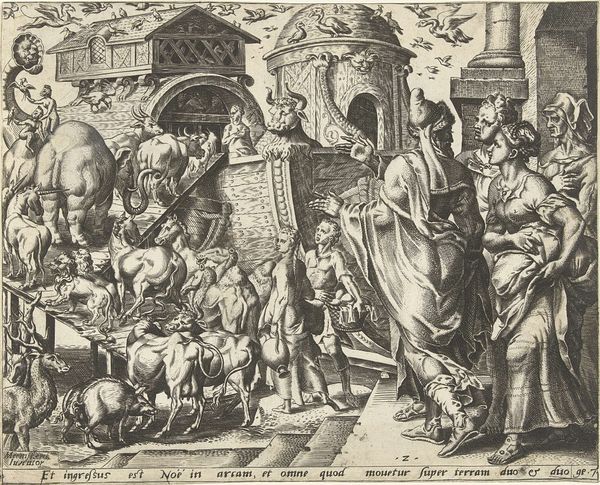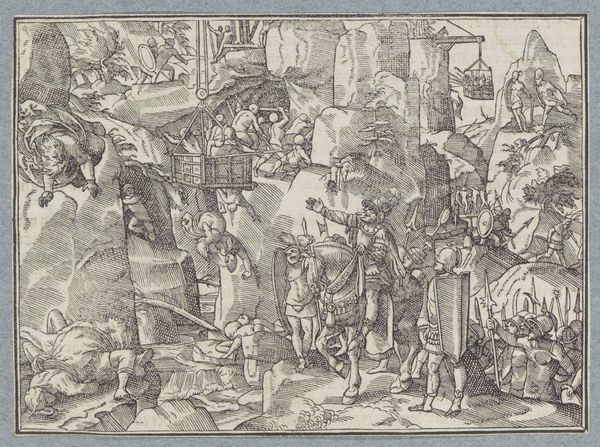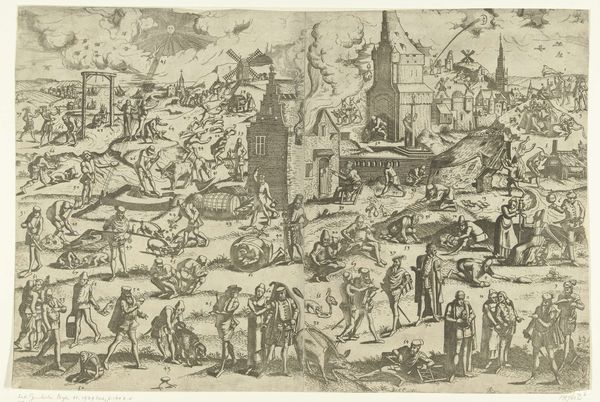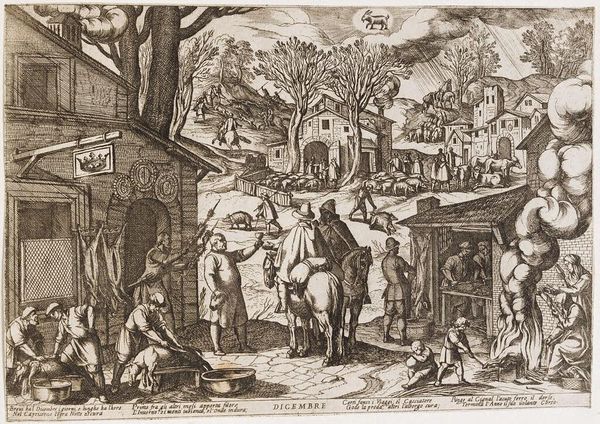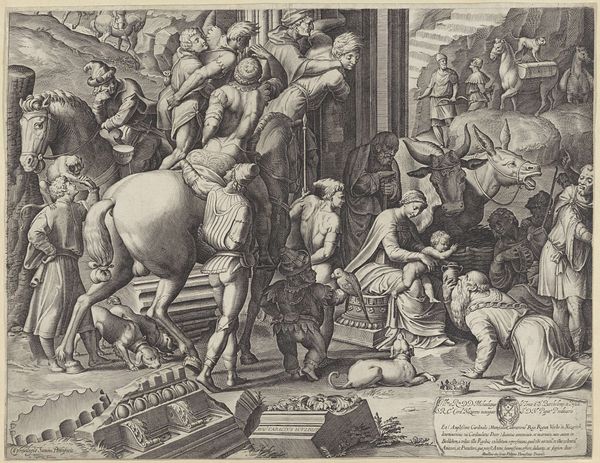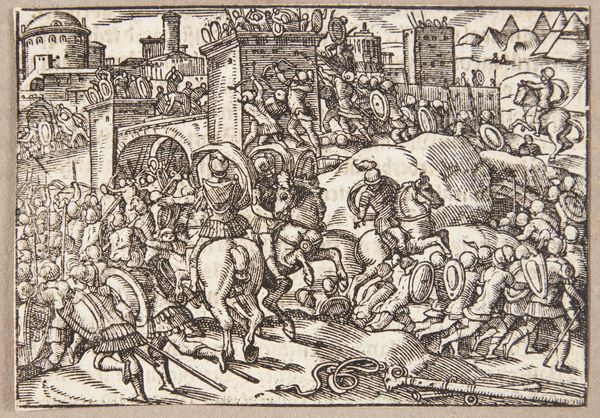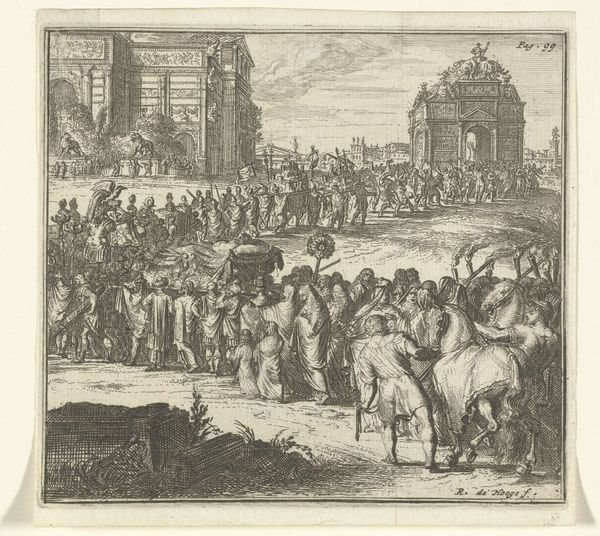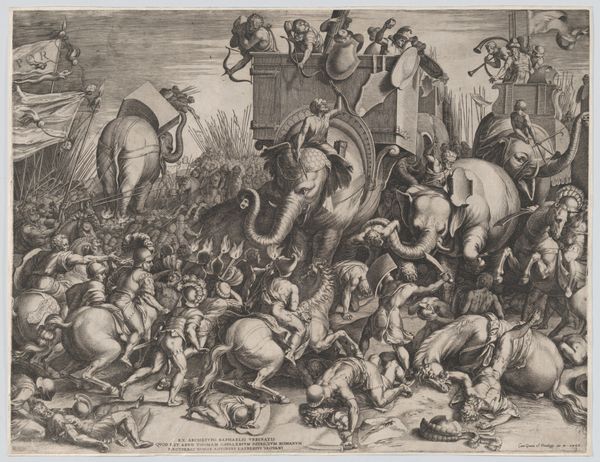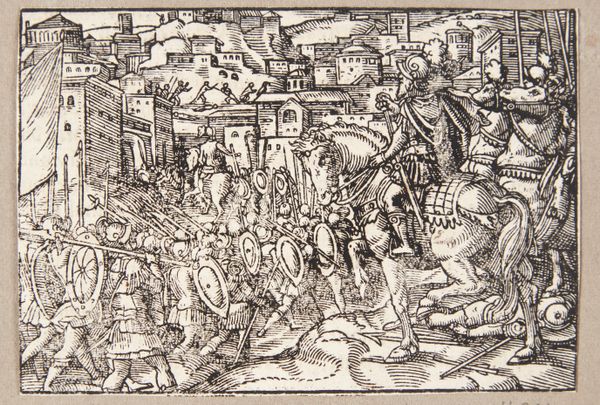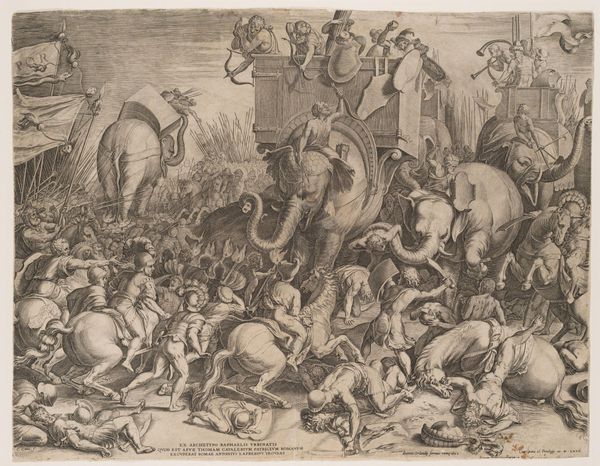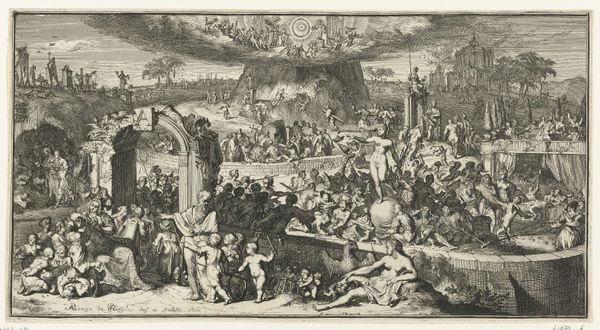
print, engraving
#
baroque
#
pen drawing
# print
#
old engraving style
#
landscape
#
figuration
#
horse
#
genre-painting
#
history-painting
#
engraving
Dimensions: height 405 mm, width 545 mm
Copyright: Rijks Museum: Open Domain
Editor: This engraving, "Maaltijd te Emmaüs" from 1606 by Jacob Matham, presents such a densely packed scene! It’s incredible all the details he’s managed to include. How do you approach interpreting a piece like this? Curator: Well, from a materialist perspective, it's fascinating to consider the production of this print. Think about the engraver, Matham, and his tools—the burin meticulously carving into the metal plate. Each line is a conscious decision, a trace of labor, right? Editor: Definitely. I hadn't thought about it that way. It’s a reproduction too, isn't it? So what’s that labour creating? Curator: Exactly! Consider this print’s function as a reproducible commodity. It democratized the image, making religious narratives accessible to a wider audience beyond the elite who could afford paintings. How does this mass production alter the consumption and understanding of the religious narrative? Editor: That’s a great point! It’s no longer a unique object of devotion, but something more widely distributed. The act of engraving itself seems less like religious expression and more like a commercial enterprise. The original painting then isn't the totality of its artistic value. The labour in mass-producing prints is a component that can transform a work. Curator: Precisely. Also note how the architecture is presented—both classical ruins and vernacular structures coexist. What does that juxtaposition suggest about the patron's or artist's intended audience? Were they creating it for a merchant, a cleric, or a lay-person in the Holy Roman Empire? Editor: Hmm, that juxtaposition makes me wonder if Matham aimed to connect the biblical story with the everyday lives of the 17th-century Dutch, grounding it in their familiar surroundings. It really prompts consideration of the social context surrounding art. Curator: And that very connection reinforces that Matham was not just conveying an isolated moment of spiritual experience but presenting it as an everyday experience. The artist made clear this was happening around those in the market and involved everyone to some extent. Editor: I see it now. By looking at the materiality and the processes of its creation, along with the lives involved in the process, the social implications become much clearer. Thanks for the insightful reading. Curator: My pleasure. Analyzing art through a materialist lens allows us to understand art and labour relationship between making art, owning it, and even using it for trade.
Comments
No comments
Be the first to comment and join the conversation on the ultimate creative platform.
